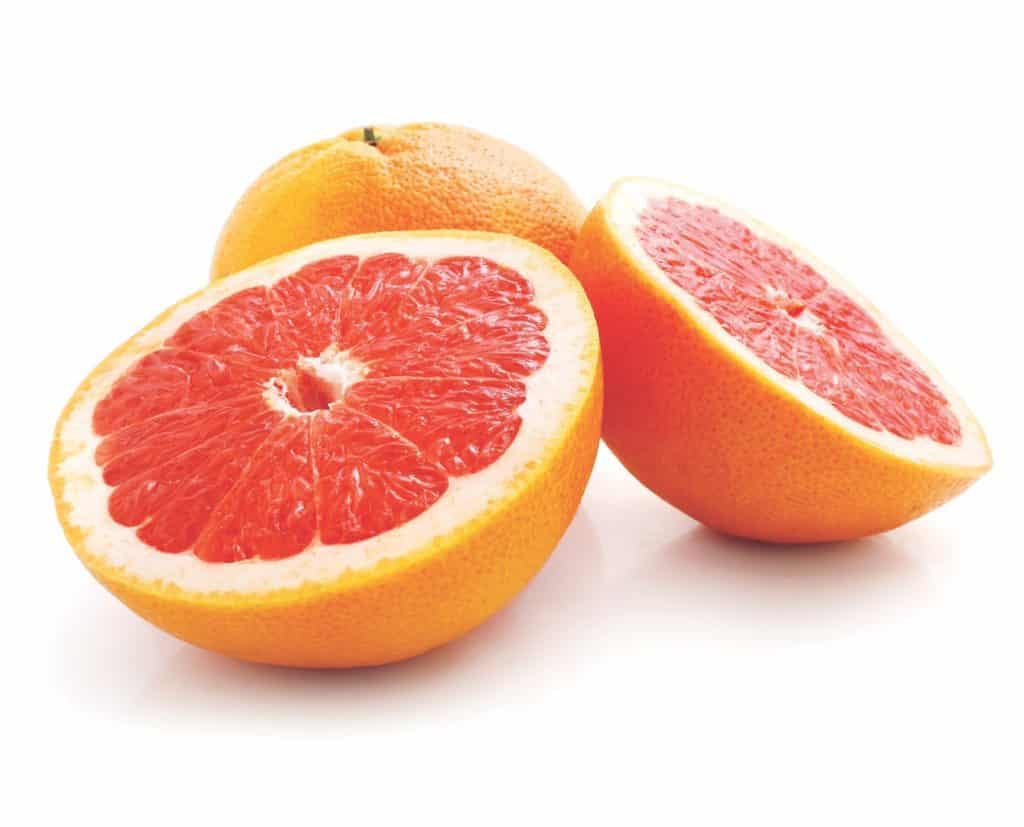
Grapefruit may have a reputation for being bitter, but a single slice through its middle reveals its true colors: a flashy range of ruby red, blushing pink, and crimson gold that provides a dose of sunshine through the cold, dreary stretch of winter. So named for the way the fruits cluster together on a tree, the tropical plant is part of the genus Citrus—a family of trees whose 20-million-year history finds roots in East Asia and Australia. While many varieties were being cultivated as early as the 12th century by the Chinese, the now-familiar Citrus x paradisi didn’t step onto the scene until the 18th century as a refined offspring of the larger, rougher pomelo in the West Indies.
Its sour flavor and hard-to-peel skin kept the citrus from quickly catching on, but a taste for it was eventually acquired. These days, grapefruit thrives wherever climates run hot—from Florida and California in the United States to Israel and China—and hits peak season typically from November through April. During this time, pink, orange, red, and even white varietals, all sporting a mix of sweet and tangy flavors, pop up in markets. When shopping, pick fruit that feels heavy for its size and has a firm, glossy surface.
Dreaming of a flourishing grapefruit tree in the backyard? The key to successful cultivation is exposing your plant to full sun and warm conditions. Plant seeds during spring in loamy, well-drained soil and choose a location that allows for abundant growth—trees can grow up to 20 or 30 feet tall. While harvest time is dependent on when the varietal has fully developed its color, it takes at least three years for trees to produce quality fruit.
Half of the world’s crop goes toward juicing, but grapefruit makes for more than just a refreshing drink. The citrus can be paired fresh with tangy yogurt, turned into a marmalade and spooned over a bed of pillowy ricotta, or transformed into rich curd to be used in tarts, on biscuits with whipped cream, or swirled into cheesecake. Use the juice to brighten vinaigrettes and marinades (it goes particularly well with seafood) or add whole segments to salads and salsas for a juicy pop. The peel can even be candied and then dipped in chocolate.
Enticing in appearance yet assertive in taste, grapefruit is indeed one polarizing fruit. Yet, learn to enjoy it in all its shades of color and flavor, and it will quickly become a paradox that’s easy to embrace.
Buttermilk Panna Cotta with Honeyed Grapefruit Compote
Ingredients
PANNA COTTA
- 1½ teaspoons unflavored gelatin
- 2 tablespoons cold water
- Nonstick cooking spray for greasing ramekins
- 1 cup heavy cream
- 1 teaspoon grapefruit zest
- ½ cup granulated sugar
- ¼ teaspoon kosher salt
- 2 cups buttermilk
- 2 teaspoons vanilla extract
COMPOTE
- 2 grapefruits
- ½ cup honey
Instructions
- ► PANNA COTTA: Sprinkle gelatin over water in a small bowl. Allow gelatin to stand and soften for about 10 minutes. Lightly coat 6 6-ounce ramekins or cups with nonstick spray.
- ► Combine cream, zest, sugar, and salt in a small saucepan over medium heat, stirring constantly until sugar dissolves. Increase heat to medium-high and bring to a low boil. Remove from heat and add prepared gelatin. Whisk until gelatin is fully dissolved and continue stirring often until mixture is lukewarm, 8 to 10 minutes. Stir in buttermilk and vanilla.
- ► Divide mixture among ramekins and refrigerate until set, about 6 hours.
- ► COMPOTE: Trim top and bottom from grapefruits and stand them up on cut sides. Working in sections, slice lengthwise between flesh and peel, following fruit’s contour and making sure all pith and peel are removed.
- ► Working over a bowl to catch juice, slice lengthwise between one segment and membrane until you reach center. Repeat with other side of segment and remove segment with knife. Transfer to a medium bowl. Repeat process until all segments are removed. Squeeze remaining membrane into juice bowl, then discard membrane.
- ► Strain juice and measure ½ cup into a small saucepan. Add honey to saucepan and bring to a simmer. Cook for 3 to 5 minutes, until mixture has thickened into a syrup. Do not cook syrup for too long or it will become bitter. Cool slightly, about 10 minutes, then pour over grapefruit segments. Chill in refrigerator until ready to serve.
- ► ASSEMBLY: Use a small paring knife to cut around each panna cotta and loosen it from ramekin. Place a plate atop each ramekin and invert, allowing custard to settle onto plate. Top each with chilled grapefruit and syrup and serve chilled. Alternatively, serve custards in ramekins with compote spooned on top.



